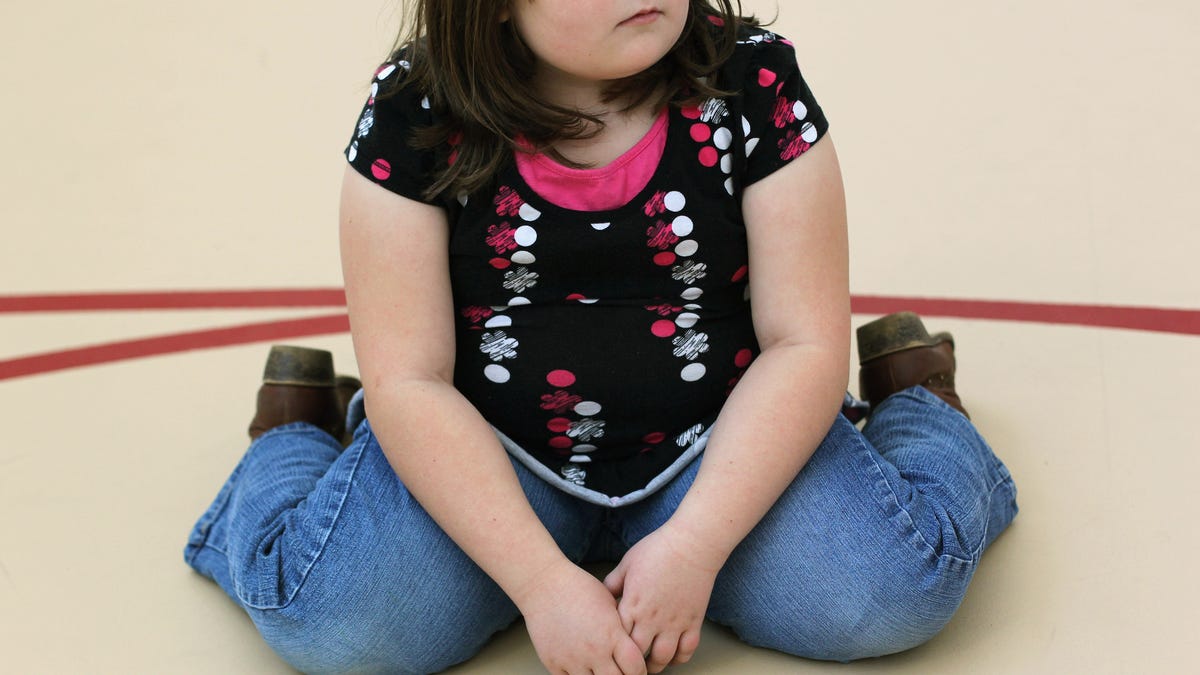
AURORA, CO - NOVEMBER 13: A child sits on the gym floor during the Shapedown program for overweight adolescents and children on November 13, 2010 in Aurora, Colorado. The 10-week family-centered program held by the Denver area Children's Hospital teaches youth and their parents ways to lead a healthier more active lifestyle, as a longer lasting weight-loss alternative to dieting. Nationally, some 15 percent of children are overweight or obese, as are some 60 percent of adults. (Photo by John Moore/Getty Images) (2010 Getty Images)
More than one-third of American adults are obese, and now, a new report shows that children and teens aren't far behind.
The report, released today (Aug. 25) by researchers at the Centers for Disease Control and Prevention, shows that 17.5 percent of children and adolescents ages 3 to 19 are now obese. That's in stark contrast to the obesity rate in the late 1970s, which was 5.6 percent.
But the researchers also found that the prevalence of childhood obesity has leveled off in the past decade, with an increase of only 0.9 percent since the 2001-2004 study period. [10 Ways to Promote Kids' Healthy Eating Habits]
However, the new report doesn't paint a full picture of obesity rates in the United States, said Michael Goran, a professor of medicine and director of the Childhood Obesity Research Center at the University of Southern California, who was not involved with the CDC report.
The overall obesity rate may not have changed, but that misses what's happening in certain populations — the rate is actually dropping in some groups, but going up in others, Goran told Live Science.
In low-income communities, particularly those with large percentages of people of Hispanic and African-American ethnic backgrounds, rates of childhood obesity are still on the rise, he said.
"Given that the prevalence is much, much higher in lower-income populations than [in] affluent populations, you have to believe that it has something to do with the particular environments of those low-income populations," Goran said.
A major factor contributing to the high prevalence of childhood obesity is sugar in people's diets. In low-income populations especially, sugary foods tend to be introduced into children's diets very early in their lives, Goran said. Sweet beverages are also a significant source of sugar, he added.
The report also compared U.S. obesity rates to those of Canadian children and adolescents, and found that the obesity rates among the Canadian group has generally risen since the 1970s, but today are lower than those of the U.S. — only 13 percent of Canadian children and adolescents are currently obese, according to the report.
Efforts to curb obesity should be aimed at children when they are young, Goran said. Studies have shown that children who are obese at a young age are significantly more likely to become obese adults according to the report.
Parents can help lower their children's risk of obesity by waiting as long as possible to introduce sugars into their kids' diets, Goran said. It's not uncommon for 6- to 9-month-old infants to be given sugary juices and sodas, and such early exposure is more likely to raise their risk of becoming obese earlier in life and continuing their sugar habit into adulthood, he said.
Goran also encouraged extended breast-feeding as a means of preventing childhood obesity; breast-feeding a child for more than 12 months would offer substantial protection, he told Live Science.
The American Academy of Pediatrics recently released new guidelines for parents to help prevent childhood obesity before it begins. In addition to bringing healthy foods into the home, the tips include limiting children's screen time and making sure children get enough sleep.
- 7 Ways to Short-Circuit Kids' Mobile Addiction
- Easy Answers to the Top 5 Science Questions Kids Ask
- 9 Snack Foods: Healthy or Not?
Copyright 2015 LiveScience, a Purch company. All rights reserved. This material may not be published, broadcast, rewritten or redistributed.